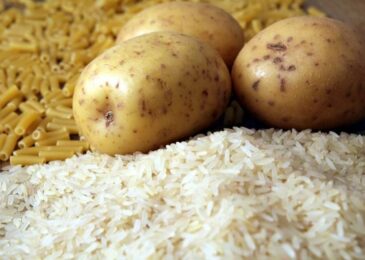Around 37 million individuals in the United States live with diabetes, with approximately 90% to 95% of those having type 2 diabetes, as reported by the Centers for Disease Control and Prevention. Insulin resistance often precedes type 2 diabetes.
You might be familiar with insulin resistance, but here’s a brief recap: Insulin, a hormone that aids in transporting sugars from your bloodstream to your cells for energy, is involved. When dealing with insulin resistance, your cells don’t respond effectively to this hormone. Consequently, your pancreas compensates by producing increasing amounts of insulin. People who are overweight, dealing with obesity, or have conditions like polycystic ovary syndrome (PCOS) might encounter difficulties with insulin resistance. Ultimately, if the insulin produced isn’t sufficient to transport sugars into your cells for energy, your blood sugar levels rise. This elevation can lead to type 2 diabetes, amplifying the risk of other health concerns such as heart disease and vision problems.
Several approaches can help prevent and manage insulin resistance, one of which revolves around dietary choices. While concerns about consuming sugary foods like fruit might arise, research doesn’t necessarily support this notion. In fact, a study published in The Journal of Clinical Endocrinology & Metabolism in 2021 found a positive correlation between fruit consumption, improved insulin sensitivity, and reduced diabetes risk. So, what type of fruit is most effective in aiding insulin resistance?
Desirable Qualities in Fruits for Insulin Resistance
Rich in Fiber Fiber contributes to slowing down digestion, as our bodies can’t fully break down and absorb it. This effect helps prevent sudden spikes in blood sugar levels. A study from 2019 published in the European Journal of Clinical Nutrition revealed that adolescents with lower fiber intake had higher fasting insulin levels, indicating insulin resistance.
Supporting these findings, a 2021 systematic review and meta-analysis in the Journal of Functional Foods demonstrated that both soluble fiber products and dietary fiber from foods enhanced insulin sensitivity in patients with type 2 diabetes.
Moreover, for those already dealing with type 2 diabetes, the Centers for Disease Control and Prevention suggest that fiber can assist in averting heart disease, a condition that individuals with type 2 diabetes are at an elevated risk of developing.
Abundant in Antioxidants Antioxidants potentially play a role in reducing insulin resistance and staving off diabetes. For instance, a study from 2022 published in Antioxidants indicated that participants with higher antioxidant intake had lower rates of prediabetes and insulin resistance. Similar results were observed in a 2019 study published in the European Journal of Epidemiology and a 2018 study in the International Journal of Molecular Sciences. Antioxidants likely contribute to combatting harmful free radicals and reducing inflammation.
The Number One Fruit for Insulin Resistance
Certain fruits are more effective than others in diminishing the risk of diabetes. Among these, pears stand out as our recommended choice for aiding insulin resistance. A medium-sized pear contains 5.5 grams of fiber—equivalent to 20% of your Daily Value—and 27 grams of carbohydrates, according to the Department of Agriculture. Pears also provide valuable antioxidants like vitamin C and polyphenols.
A meta-analysis from 2017 published in Food & Function found that consuming pears and apples reduced participants’ type 2 diabetes risk by 18%. Further analysis showed that even consuming just one serving of pears and apples per week resulted in a 3% reduction in type 2 diabetes risk.
Additionally, a review of studies from 2018 in BMC Complementary Medicine & Therapies highlighted pears’ anti-diabetic properties, potentially linked to their function as alpha-amylase and alpha-glucosidase inhibitors. These inhibitors hinder carbohydrate absorption, thus preventing blood sugar spikes and lowering diabetes risk in individuals with impaired glucose tolerance, as supported by a 2018 Cochrane systematic review.
Other Beneficial Fruits for Insulin Resistance
While pears excel in managing insulin resistance and preventing type 2 diabetes, other fruits offer significant benefits as well.
Apples. Remember the 2017 Food & Function study we mentioned? It found that alongside pears, consuming apples could also decrease the risk of diabetes. Berries. Packed with fiber and antioxidants, berries have the potential to manage insulin resistance effectively. A study from 2020 published in Food & Function demonstrated that berries improved glycemic control and markers for diabetes-associated health complications like cardiovascular disease in at-risk individuals. Citrus fruits. A 2021 study in Trends in Food Science & Technology indicated that long-term consumption of citrus fruits improved fasting insulin levels, a marker for insulin resistance. This improvement might stem from positive alterations in gut bacteria and a reduction in inflammation.
In Conclusion
If you’re grappling with insulin resistance and are at risk for diabetes, there’s no need to be overly cautious about including fruit in your diet. Fruit can undoubtedly be part of your dietary plan while you manage your blood sugar levels. In fact, fruit offers numerous health advantages, contributing to a healthy eating regimen due to its fiber and antioxidant content. Pears top our list of recommended fruits for insulin resistance due to the proven relationship between their consumption and reduced type 2 diabetes risk. Apples, berries, and citrus fruits also constitute excellent choices to regularly integrate into your diet.
Disclaimer: The views, suggestions, and opinions expressed here are the sole responsibility of the experts. No Digest Pulse journalist was involved in the writing and production of this article.





